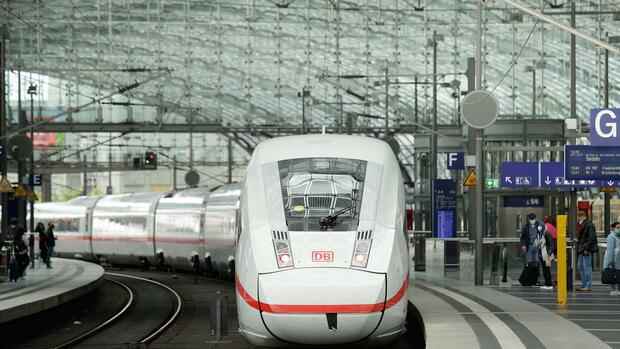Deutsche Bahn could finance additional investments by borrowing.
(Photo: dpa)
After successful exploratory talks, the traffic light parties begin negotiations on the coalition agreement. In public, financial policy is discussed as one of the greatest hurdles.
Because apparently the circle has to be squared: to finance additional future investments of up to 500 billion euros within the framework of the constitutional debt brake without tax increases. Can that go well?
It can and will go well. The new federal government only has to fall back on tried and tested financial policy concepts and adhere to the principle that public investments are implemented by public companies.
The new federal government should therefore strengthen public companies to finance their investment plans. To this end, the federal government has three financial policy instruments at its disposalthat do not restrict the financial leeway according to the debt brake.
Top jobs of the day
Find the best jobs now and
be notified by email.
- The first instrument is to strengthen the equity base of existing public companies. For example, as part of the climate package, the federal government has already decided to raise Deutsche Bahn’s equity in order to advance the modernization and digitization of the rail network. This path should be followed further. In addition, Deutsche Bahn can finance additional investments by taking out a loan.
- The second instrument is the acquisition of stakes in companies which, as regulated monopolists, are central to achieving the goals set by the federal government. For example, the federal government can acquire stakes in the transmission system operator Tennet in order to strengthen its equity base and thus stimulate investments in the construction of power lines. With a majority stake, the federal government would gain control over a monopoly that is central to the success of the energy transition in Germany.
- The third instrument is the establishment of new public infrastructure companies in rapidly growing future areas. For example, the federal government can set up a hydrogen company in order to build up a nationwide network of pipelines for the transport of renewable hydrogen in Germany.
However, the need for public investment is largely a municipal investment need. This is not covered by the federal measures mentioned, because the financing of municipal investments is mainly a task of the federal states and municipalities.
The author is Professor of Macroeconomics at the University of Mannheim.
(Photo: Alex Kraus / Kapix)
A consistent application of the financial policy approach developed here at the federal state level is possible and would ensure the financing of the necessary municipal investments.
Financing future investments in this way is not only possible from a financial perspective, but also makes good economic sense. The Federal Government and the Bundestag develop a rough investment plan, but delegate the individual investment decisions to public companies, which decide on their investment activities and possible loan financing depending on the situation.
Such an approach combines business management with an orientation towards the common good and ensures that goals for society as a whole are achieved with efficient use of resources.
More: Financing investments and pensions: Sharp criticism from top economists of the traffic light negotiators
